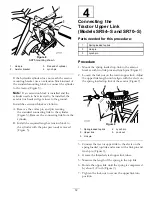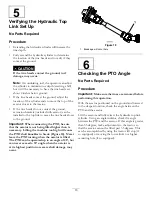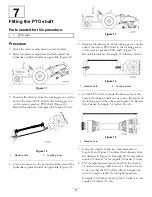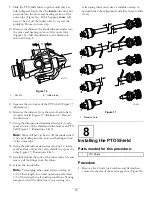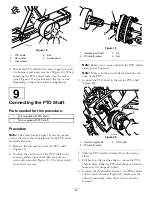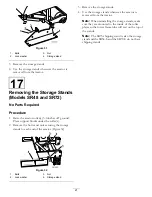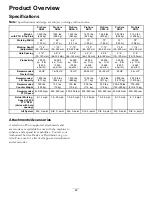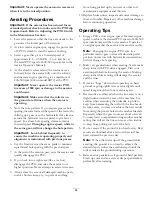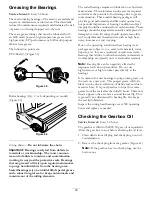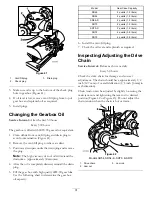
CAUTION
To avoid personal injury, never leave the tractor
seat without first disengaging the PTO drive,
setting the parking brake and stopping the
engine. Never perform aerator adjustments or
repairs without first lowering the aerator onto
the safety stand. Be sure all safety devices
are secured in proper place before resuming
operation.
7. Look behind frequently to ensure the machine is
operating properly and alignment is maintained with
previous passes. A loss of one line of holes indicates
a bent or lost tine. Inspect after each pass.
8. Always clear the area of all damaged machine
parts, such as broken tines, etc., to prevent them
from being picked up by mowers or other turf
maintenance equipment and thrown.
9. Replace broken tines, inspect and correct damage to
those still usable. Repair any other machine damage
before commencing operation.
Subsoil Cultivation
Subsoil cultivation, fracturing or “heave” is created by a
spading motion of the tine in the soil as the aerator and
tractor move forward. Quality of finish on the playing
surface after aerating will depend on various factors
including turf condition, root growth and moisture
content.
Hard Ground
If the ground is too firm to obtain the desired aeration
depth, the coring head can get into a “bouncing”
rhythm. This is due to the hard pan the tines are
attempting to penetrate. This condition can be
corrected by attempting one or more of the following:
•
Best results are obtained after a rain or when turf
has been watered the previous day.
•
Reduce the number of tines per stomper
arm. Attempt to maintain a symmetrical tine
configuration to evenly load the stomper arms.
•
Reduce aerator penetration (depth setting) if ground
is hard packed. Clean up cores, water turf, and
aerate again at a deeper penetration.
Aeration of soil types built on top of hard sub soils
(i.e. sand/soil cap placed over rocky ground) can cause
undesired hole quality. This is caused when the aeration
depth is greater than the soil cap and the sub soil is
too hard to penetrate. When the tines contact this
sub soil the aerator may lift and cause the top of the
holes to become elongated. Reduce the aeration depth
sufficiently to avoid penetration into the hard sub soil.
Longer/Larger Tines
Using longer/larger tines can leave the front or rear of
the hole tufted or slightly deformed. Hole quality for
this configuration generally improves if the coring head
speed is reduced 10-15% from full operating speed. For
PTO powered aerators reduce the engine speed until
the PTO speed is around 400 – 420 rpm. The forward
spacing is not effected by reducing the engine speed.
The pushed hole can also be affected by the position of
the camber bracket. Refer to Adjusting the Tine Angle.
Multi Row Adapter Heads
When using multi row adapter heads, reduce the engine
speed until the PTO speed is around 400 – 420 rpm.
The forward spacing is not effected by reducing the
engine speed.
Root Zone Lifting
Using multi-tine heads in conjunction with larger coring
tines or large diameter solid tines can induce significant
stress on the root zone of the turf. This stress can
fracture the root zone and cause a lifting action to the
turf. If this damage occurs try one or more of the
following:
•
Reduce tine density (remove some of the tines)
•
Decrease coring depth (suggested in 1/2 inch
increments)
•
Increase forward hole spacing (change tractor
transmission up one gear)
•
Decrease the tine diameter (solid or coring)
Using the Hood Prop Rods
Model SR75 only
1. Release the latch on each side of the aerator hood.
2. Raise the hood.
3. On each side of the hood, pivot the prop rod down
from magnetic storage bracket and insert it into the
prop rod catch (Figure 33).
25


